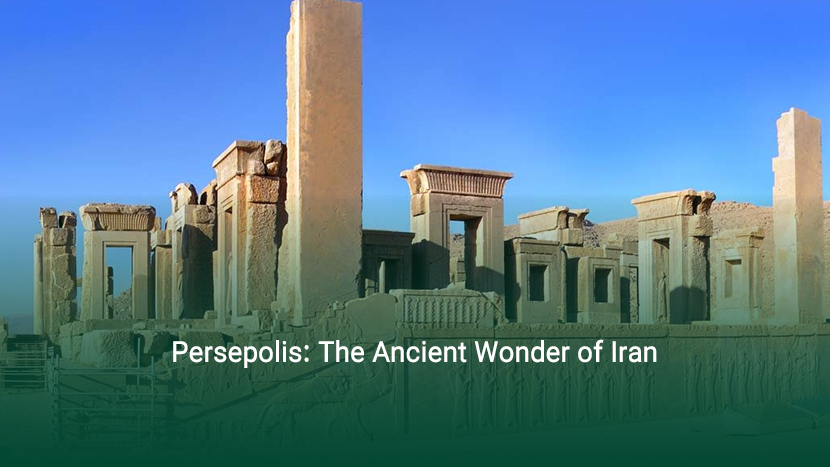
Persepolis, also known as Takht-e Jamshid, is one of the most magnificent historical landmarks of Iran and a symbol of the grandeur and power of the Achaemenid Empire. Founded by Darius the Great, this ancient city served as the ceremonial capital of the empire. In this article, we will explore its history, architecture, function, and eventual fate.
Persepolis was built around 518 BCE by the order of Darius I in the Marvdasht plain of Fars province. This location was carefully chosen not only to represent the might of the empire but also to host official ceremonies and royal events. After Darius, his successors, including Xerxes I and Artaxerxes I, continued to expand and complete the complex.
Persepolis was constructed on a vast stone terrace covering approximately 125,000 square meters. The site features grand palaces, monumental staircases, towering columns, and remarkable stone reliefs. The most significant sections of Persepolis include:
The symmetrical staircases leading to the entrance of Persepolis were designed with low steps to ensure a smooth and ceremonial ascent. This design reflected the Achaemenid policy of inclusivity and respect for different cultures within the empire.
Built by Xerxes I, this grand entrance symbolized the diversity of the Achaemenid Empire. Carved reliefs depict delegates from various nations bringing tributes, emphasizing the empire's vast reach and diplomatic relations.
One of the most magnificent structures in Persepolis, built by Darius the Great. Apadana had 72 towering columns supporting its massive roof. The walls of the palace are adorned with reliefs of soldiers, nobles, and representatives of different nations.
This was the private palace of Darius I, made of polished stone that gave it a reflective, mirror-like quality. The reliefs here depict Darius entering the palace and being guarded by royal soldiers.
Commissioned by Xerxes I, this grand hall was one of the largest structures in Persepolis. It was likely used for official receptions and meetings with foreign dignitaries.
This section stored the empire's wealth, including gold, silver, and other valuable items. Excavations have uncovered remnants of this vast treasury, shedding light on the economic power of the Achaemenids.
Persepolis primarily served as a ceremonial and administrative center, hosting grand celebrations, particularly the Persian New Year (Nowruz). Representatives from various nations participated in these ceremonies, presenting gifts and paying tribute to the king.
The complex reflected the advanced administrative system of the Achaemenid Empire, which stretched from India to the Mediterranean. The inscriptions left by Achaemenid kings in Persepolis provide valuable insights into the political, economic, and cultural aspects of their rule.
In 330 BCE, Persepolis was conquered and set ablaze by Alexander the Great. It is believed that this destruction was an act of revenge for Xerxes' invasion of Athens. Despite this devastation, the stone structures of Persepolis have endured for centuries and remain a testament to the glory of the Achaemenid civilization.
Traveling to historical cities is very rewarding and gives you the opportunity to discover the secrets of the past. Shiraz and other ancient cities are areas full of historical wonders that will be attractive and exciting for any tourist. So be sure to put this region of Iran on your list of virtual tourism destinations (live and direct broadcast) and travel there with a relaxed mind and riding the waves.If you have personally traveled to this Historical monument, please write your experiences and memories for us and other readers so that they can use these experiences to plan a dreamy and memorable trip.
By using form u agree with the message sorage, you can contact us directly now